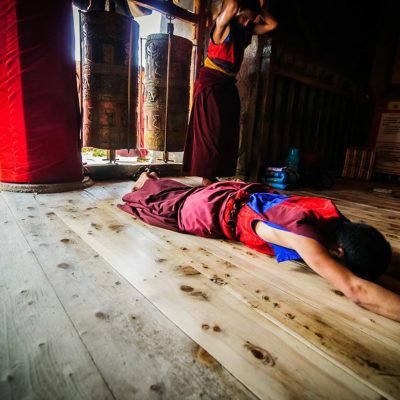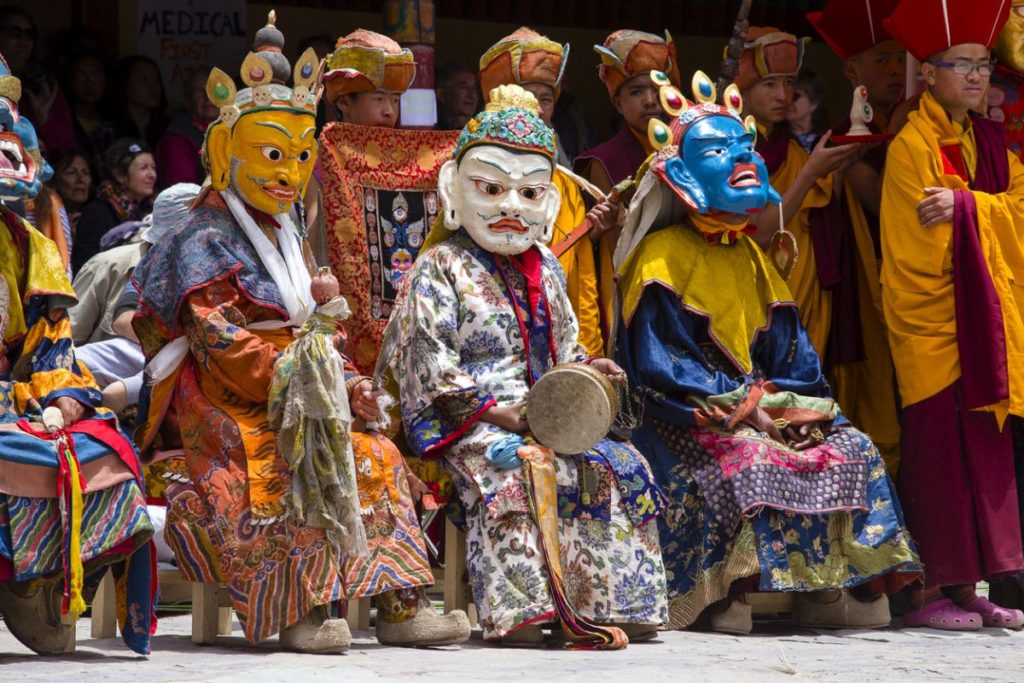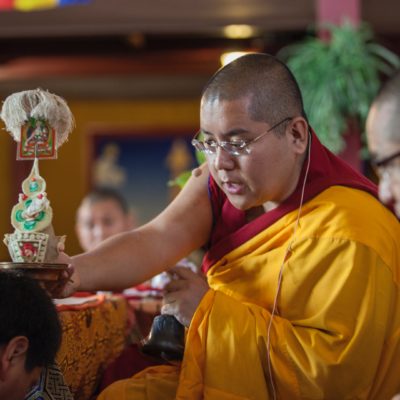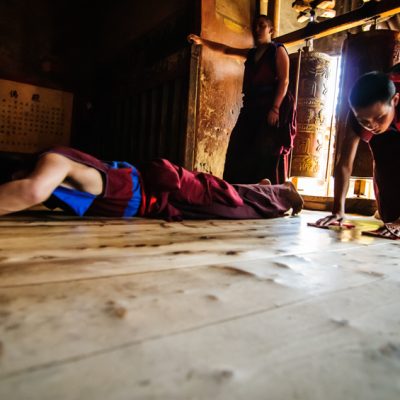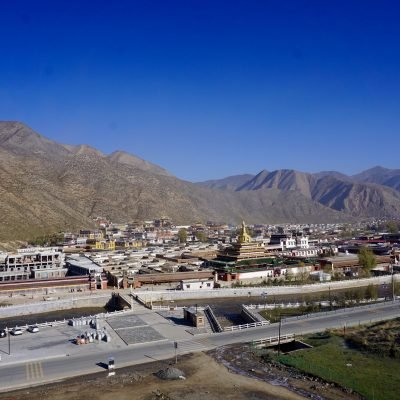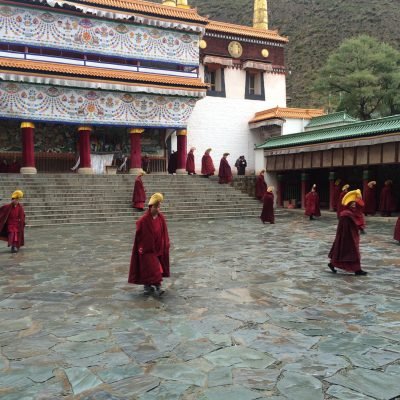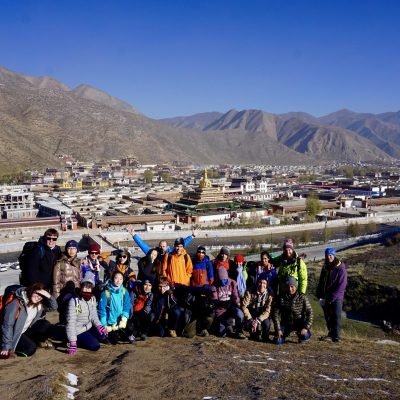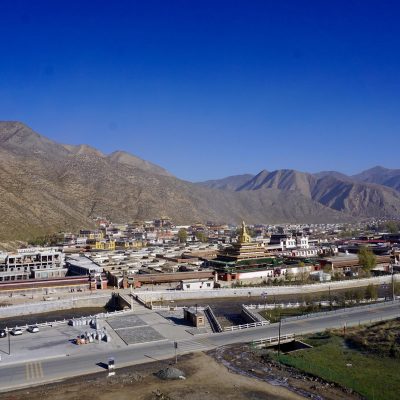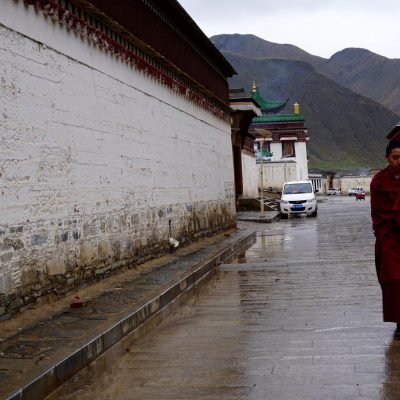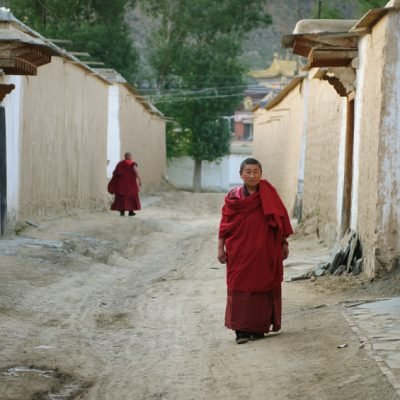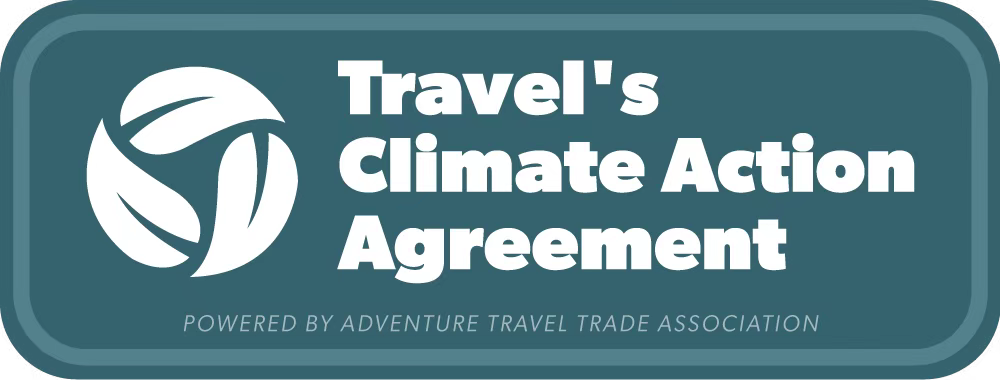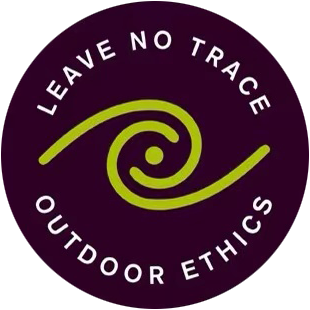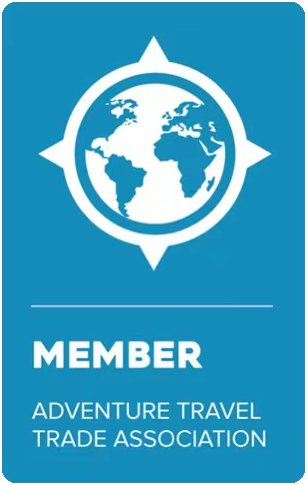Day 1 → Arrive Xining
Day 2 → Xining - Rebkong
Day 3 → Rebkong and Bon Ceremony
Day 4 → Rebkong and Tibetan Cham Dance
In the morning we will drive about 10 km to Gomar Monastery to have a fantastic view of all the villagers gathering to have a breakfast together in the monastery. Some even say that this is the biggest communal breakfast in the world. Local Tibetans bring their milk tea and homemade bread to the monastery and talk about the stories that have happened over the last year and exchange their ambitions and hopes for the coming year. Afterwards, drive to Sanggeshong Yago to enjoy the Cham Dance: The Cham dance calls on traditions that date back more than 500 years. The fourth Panchen Lama went to Shambala (a type of heaven) through meditation and created the Cham Dance. According to the Cham Dance that the Panchen Lama saw in his ethereal vision, the fifth Dalai Lama formalized the dances in the Cham Yig book, and each monastery has created its own unique interpretations over the centuries. Cham performances and ceremonies feature sacred masked dances, sacred music, healing chants and spectacular richly ornamented multi-colored costumes. The dancers use symbolic hand gestures known as madras to transmit healing powers from the deities. With accompanying narration and a monastic debate demonstration, the program provides a fascinating and vibrant glimpse into ancient and current Tibetan culture. Overnight in Rebkong.
Day 5 → Rebkong - Ganjia Grasslands
Day 6 → Ganjia -Labrang
Day 7 → Labrang - Langmusi
After breakfast, walk to Thangka wall. The highlight of the Tibetan New Year Monlam festival is the Sunning the Buddha which is displayed on the slope of a hill just outside the Labrang monastery complex. We will join a large crowd of devout Buddhists who have been waiting since the early morning for today’s special event, the annual Sunning of Buddha ceremony. The huge Thangka will be carried out of the hall towards a mountain range to be spread along the slope of the mountain. Along the way crowds of worshippers will gather around to touch the Thangka in order to get the New Year blessing, and later sing, dance and hold prayer sessions to celebrate the occasion. Afternoon drive to Taktsang Lhamo (Langmusi) and overnight in Langmusi
Day 8 → Langmusi - Luqu
After breakfast, we will hike through the stunning Lhamo Gorge and visit Taktsang Lhamo monastery as we discover the source of the White Dragon River in a deep cut canyon at 3,200 meters. We will enjoy and participate in the Cham Dance in Taktsang Lhamo monastery. Then in the afternoon we will drive to Luqu county, visit Luqu monastery and enjoy the colorful Cham dance ceremony there as well. All the participants in dance are pilgrims who have come from near and far for this special ceremony. You will meet farmers, nomads, pilgrims, and all sorts of Tibetans decked out in their traditional silk robes all there to receive blessings (conferred by touching their heads) from a high ranking Lama. This is a time for the local people to wear all their best clothes and it is a great place to learn about Tibetan fashion and cultural dress. Overnight in Luqu.
Day 9 → Luqu - Labrang
Day 10 → Labrang- Lanzhou
After breakfast we will join the local Tibetans in the morning for their ritual ceremony of turning the Maitreya Buddha. The Buddha of Maitreya, or future Buddha, is 3 meters high and is made of silk. This precious artifact will be carried by a group of monks as they make their way around Labrang monastery. Of course large crowds will follow the whole ceremony again in order to get blessings and Buddhist wishes, hoping that they could follow the Maitreya’s teaching when he or she will turn the Dharma and land back on this earth after the long awaited coming. Afterwards drive to Lanzhou.
Overnight in Lanzhou in a 4 star hotel.
Day 11 → Depart Lanzhou
February 26
The drive from Lanzhou city to Lanzhou airport is about 1.5 hours.
We will drop you off in one group drop off in the mid-morning as we say our goodbyes with a lifetime full of memories and hearts full of life and hope from our New Year celebration.
Check out and transfer to Lanzhou LHW airport for your departure flight.
